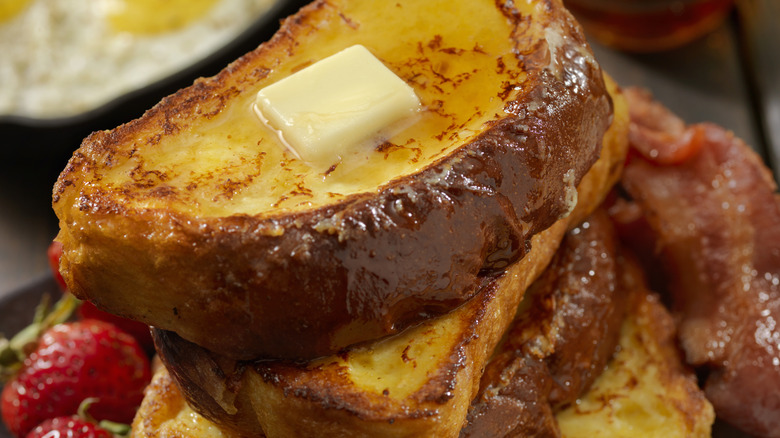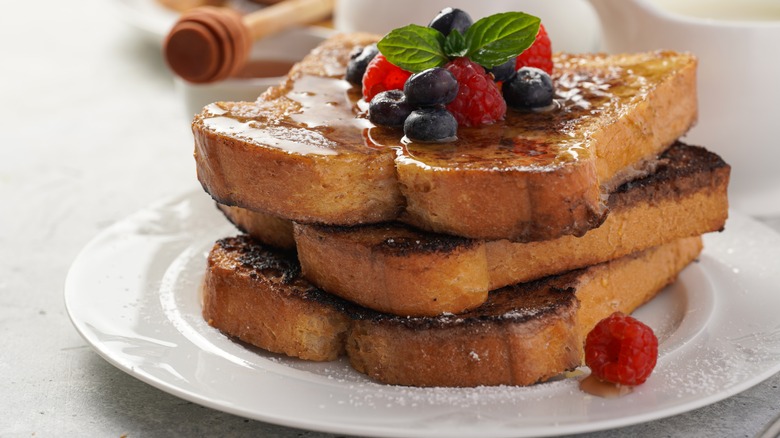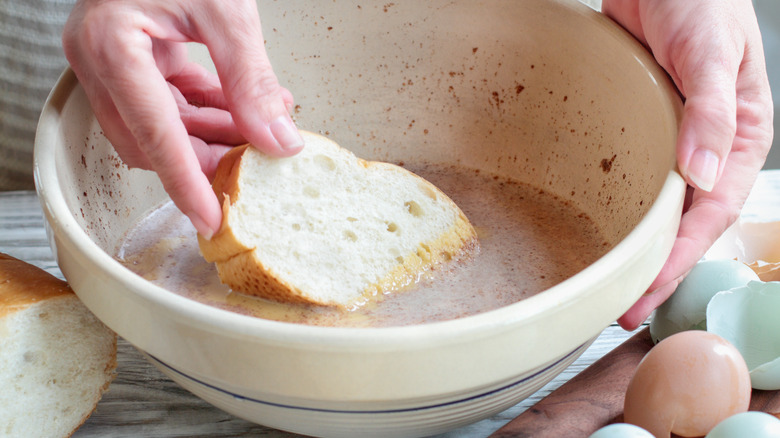French Toast Is Better With Oven-Roasted Bread
Besides the obvious reason to love French toast — it's delicious — one of the most lovable qualities about this popular breakfast and brunch dish is its ability to transform bread that has gone stale into a pillowy soft and decadent meal. But, you don't have to wait until your old loaf is just about ready to toss in the trash to make this popular dish; in fact, the best version is made with bread that has been first roasted in the oven.
To prepare the perfect plate of French toast, preheat your oven to 300 degrees Fahrenheit, then place slices of bread on the wire rack inside. Bake on each side for eight minutes, then proceed with your usual classic French toast recipe. With this extra step, you'll find that oven-roasting slices beforehand helps to manage moisture in the bread, resulting in an ideal texture for the final meal, with a fluffy (but not mushy) interior and a crispy, toasted exterior.
Why moisture matters for French toast
The origins of French toast are surprisingly far-reaching and somewhat uncertain, but what is for certain is the science behind what makes the perfect end result. When it comes to what matters most, it's the moisture inside the slices and their ability to absorb the egg batter. As the primary ingredient of French toast, bread is responsible for its foremost flavors and textures. For this reason, you want to maintain the optimal flavor and texture, which is why oven-roasting slices first can be a game changer.
As bread goes stale, moisture escapes and the starches that form the bread's structure undergo changes, causing the loaf to become dry and crumbly. This process is called starch retrogradation and it happens over an extended period of time that varies depending on the kind of loaf used. Bread is dehydrated as well through the use of the oven, meaning it will lose moisture, but the texture isn't compromised in the same way as bread going stale, so the French toast can still become moist while maintaining its shape, rather than falling apart on the plate.
The best types of bread to use
It's not just the dryness of the bread that's important but also the kind of bread itself. You can make French toast with just about any slices you like, including whole wheat and seeded options for an earthy flavor or added crunchy texture. Both also play a huge role in determining how much of the egg batter will be absorbed in the cooking process.
If you're seeking the softest kind of French toast, you'll want to opt for a sweet bread with a dense crumb, like brioche, challah, or an artisanal Pullman loaf. These kinds are often made with sugar, eggs, and milk, which adds to the richness in the batter. The small holes in these types of bread also act like air bubbles that were created by the yeast while the dough was rising; having these more tightly packed together (rather than big holes like those in sourdough) will help maximize how much batter the bread absorbs.
The thickness of your slice of bread and how long you soak it in the batter will also impact the custardy texture of your French toast. Some experts say letting bread sit in the batter for 15-20 minutes is optimal to get the best results.



